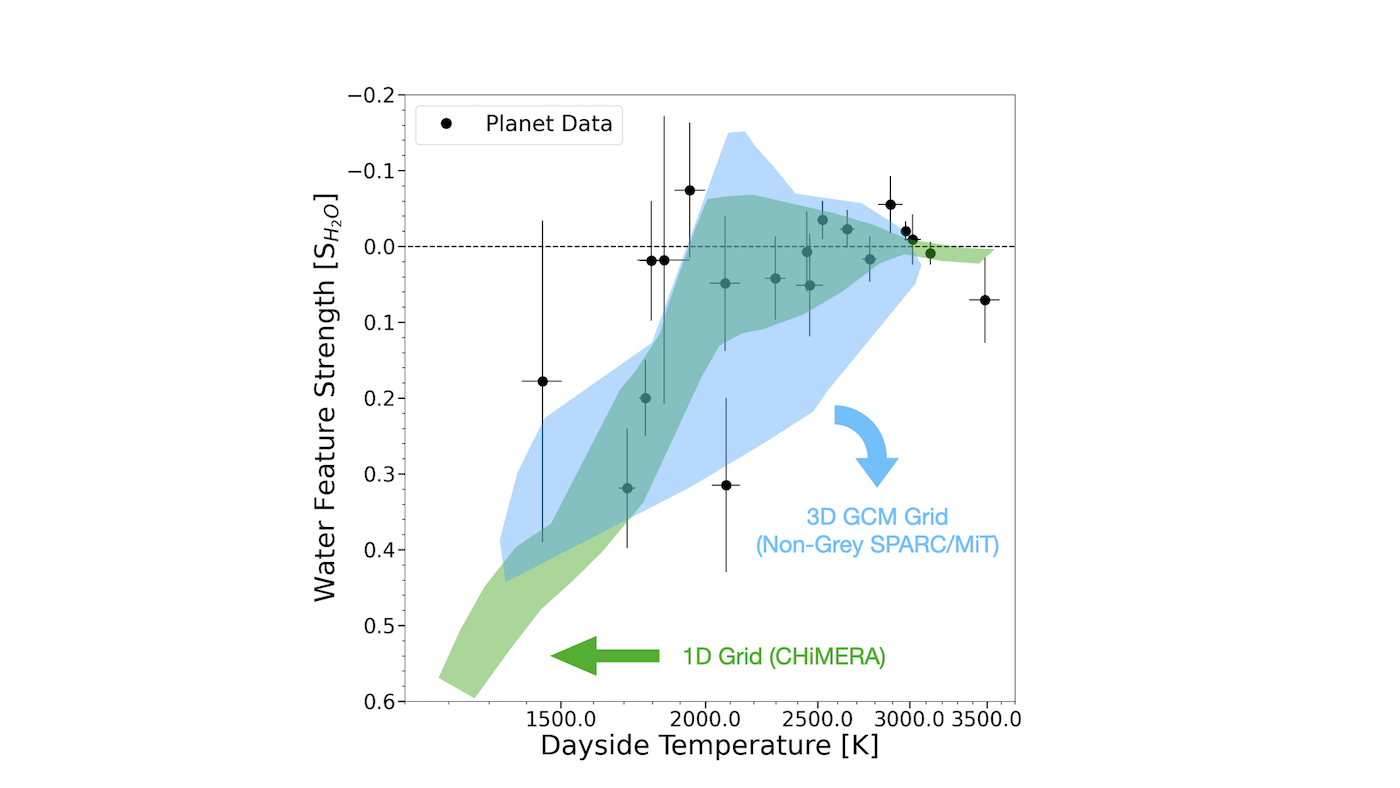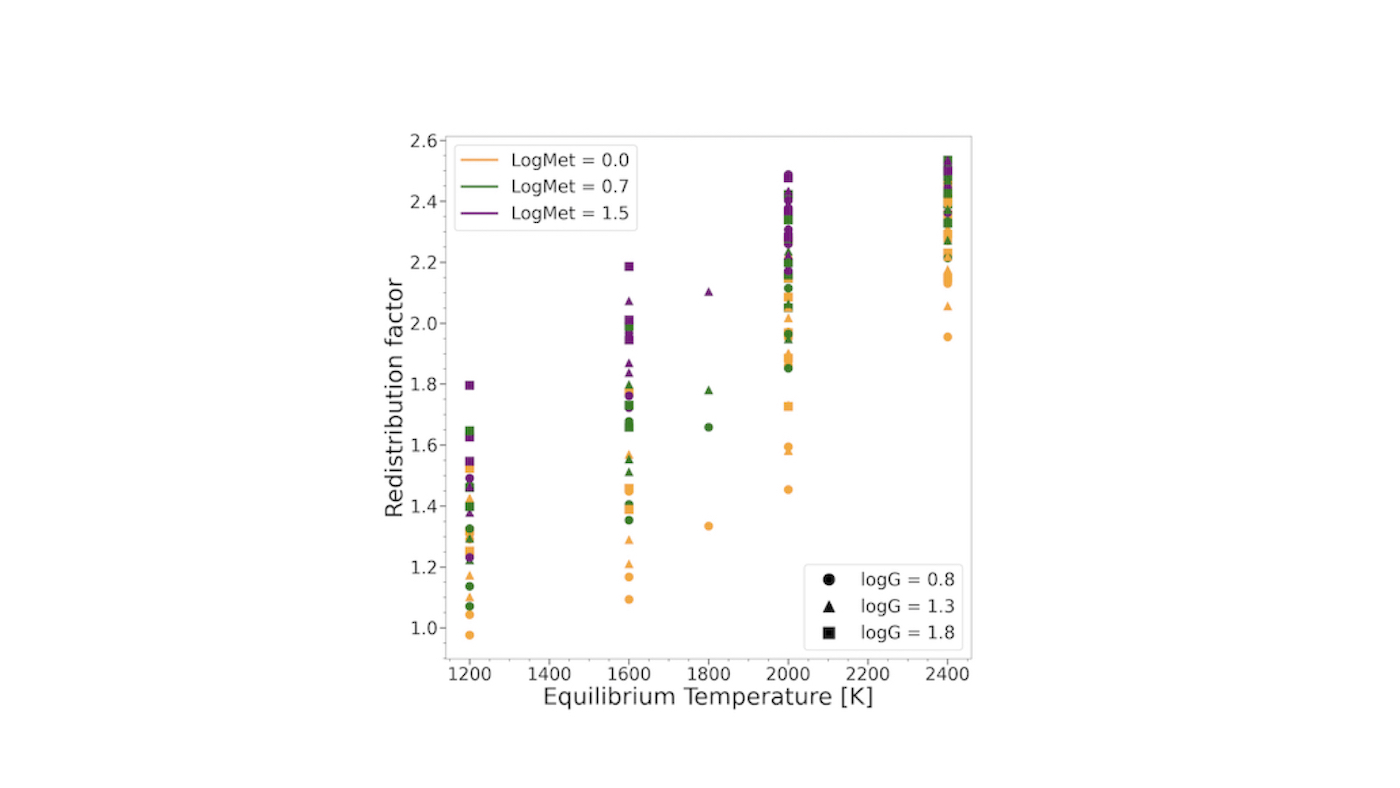Exploring Hot Jupiter Atmospheres with a Grid of 150 Parameterised Non-Grey GCM Simulations.
- University of Oxford, Atmospheric, Oceanic and Planetary Physics, United Kingdom of Great Britain – England, Scotland, Wales (alexander.roth@physics.ox.ac.uk)
The hot Jupiter exoplanet population is extremely diverse, spanning more than an order of magnitude in instellation, gravity, rotation period and atmospheric metallicity. As a new era of high-quality exoplanet observation fast approaches, with the coming James Webb Space telescope and Ariel missions providing wide wavelength coverage and ground-based telescopes supplying high resolution data, hot Jupiters will continue to be the best targets for atmospheric characterisation. A hierarchy of atmospheric models, from 1D radiative transfer codes coupled with advanced chemical networks up to 3D GCMs with complex treatment for atmospheric dynamics, have been used to model these planets, often trading modelling complexity for computational speed and cost. Yet, most of these planets are tidally locked and their atmospheres are intrinsically 3D, so they cannot be fully understood with 1D or 2D models. For example, predictions for the water feature strength observed in the HST/WFC3 bandpass vary drastically between 1D and 3D models, see Figure 1. This is increasingly prevalent at higher temperatures where strong day-side temperature inversions caused by TiO/VO may result in the feature being observed more strongly in emission than 1D models currently predict.

Figure 1: Comparison between our 3D grid computed using the non-grey SPARC/MiTgcm, a 1D grid of models using the 1D radiativ/convectivee transfer code CHiMERA and observation data.
Calculated using the state-of-the-art non-grey global circulation model SPARC/MiTgcm, we here create the largest library of 3D hot Jupiter models yet. This consists of 150 models spanning a wide range of instellation, metallicity, gravity, rotation period and the presence of strong photo-absorbing molecules TiO and VO, with the view to additionally explore planetary radius and atmospheric drag in the future. In addition to systematically varying these parameters, we also vary them jointly, something which has not been incorporated in any previous studies to date. From these simulations, we analyse the atmospheric pressure-temperature profiles and dynamic flows to identify any resulting qualitative trends in the atmospheric properties. We also calculate secondary eclipse spectra, transit spectra and phase curves to investigate how the day/night heat redistribution and spectral properties vary with planetary parameters. From this analysis we observe huge variations in the atmospheric properties within the grid. For example, the redistribution factor, an expression of day to night heat redistribution, varies by up to a factor of two depending on the parameters in our grid, see Figure 2. This means that, when working in synergy, intrinsic planetary parameters may cause divergence from previously computed models by a factor greater than any other additional processes such as nightside clouds, chemistry or MHD effects. Additionally, degeneracies in these values for our grid parameters, for instance higher surface gravity models having similar redistribution factors to higher metallicity, low surface gravity, models, complicates the picture even further.
Ultimately, we will interpolate this grid of GCM simulations to compare specific predictions for our range of possible observed planets, and compare with observed and predicted trends in hot Jupiter observations.

Figure 2: Comparison of redistribution factor, defined as f= (Tday/Teq)4, between models in our grid. Here we show the effects of surface gravity and metallicity. A value of 1 on this plot equates to an idealised fully homogenous atmosphere and a value of 2.66 to a case with no day to night heat redistribution.
How to cite: Roth, A. and Parmentier, V.: Exploring Hot Jupiter Atmospheres with a Grid of 150 Parameterised Non-Grey GCM Simulations., European Planetary Science Congress 2021, online, 13–24 Sep 2021, EPSC2021-744, https://doi.org/10.5194/epsc2021-744, 2021.

